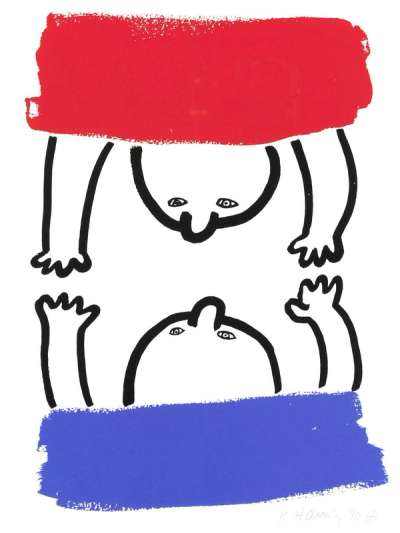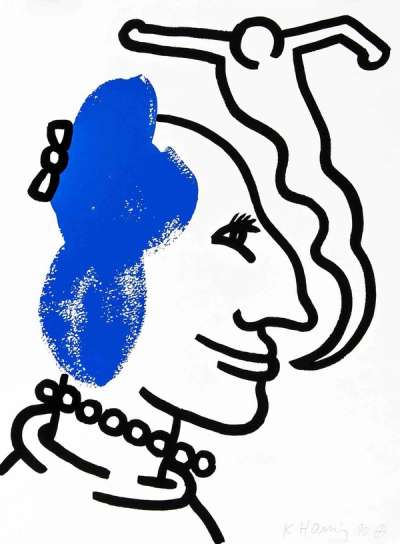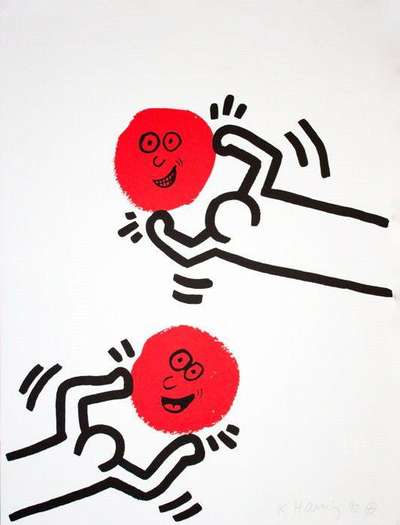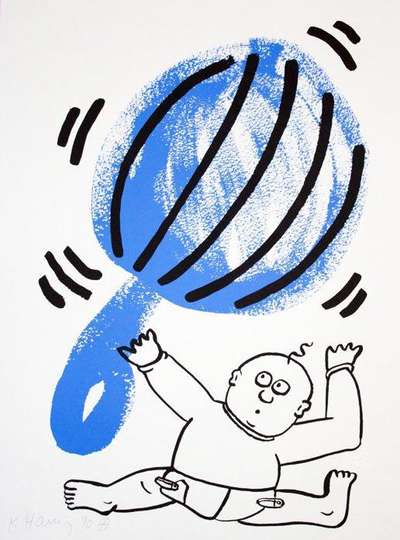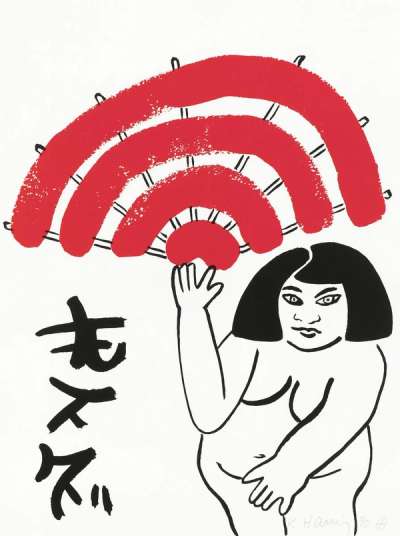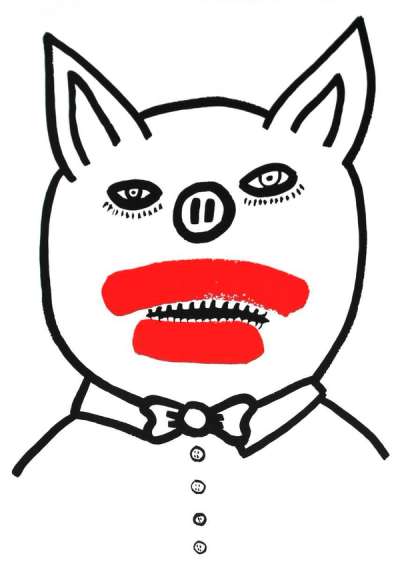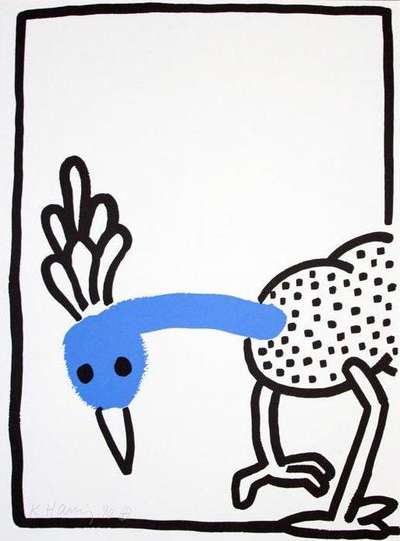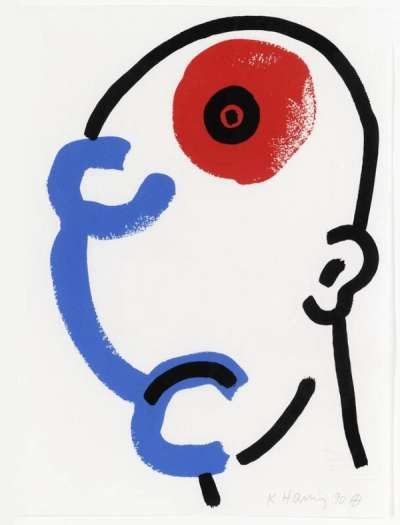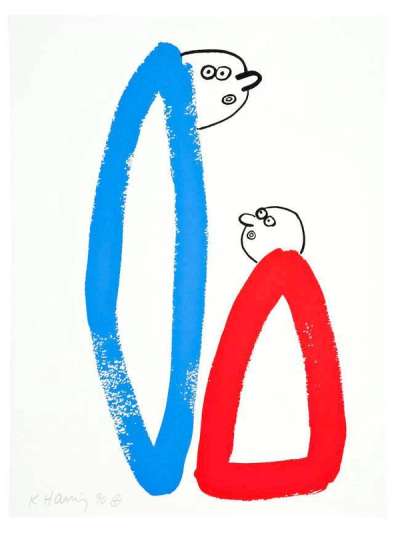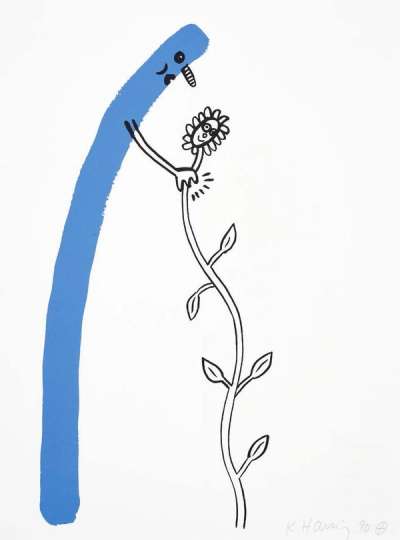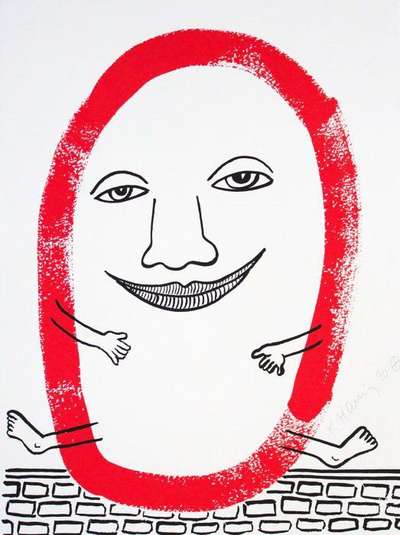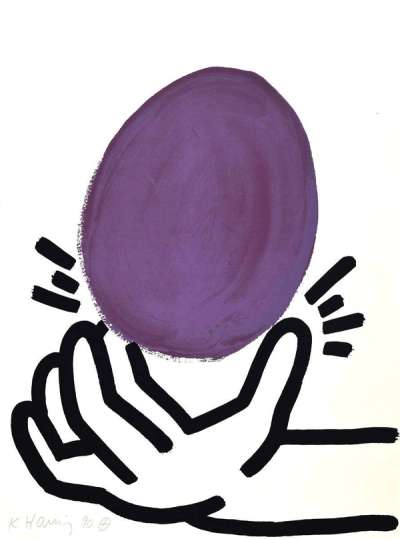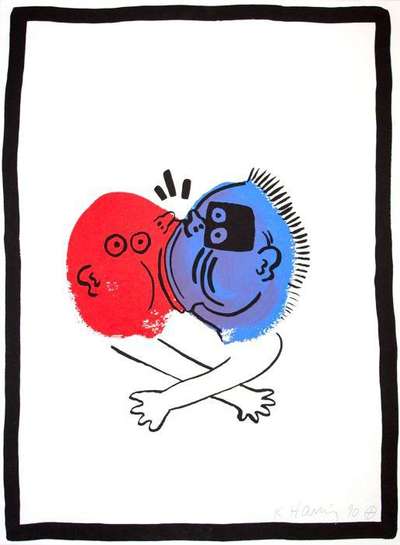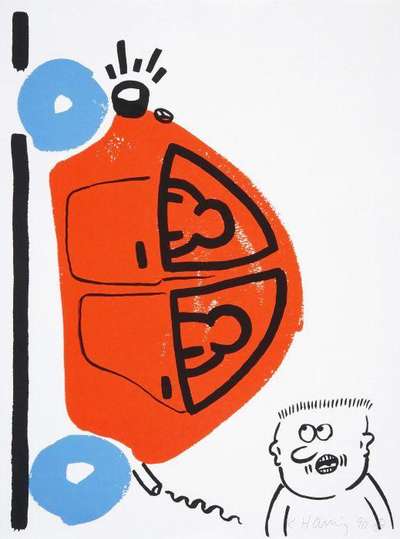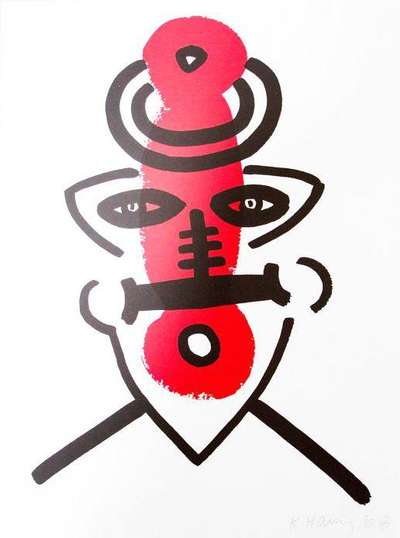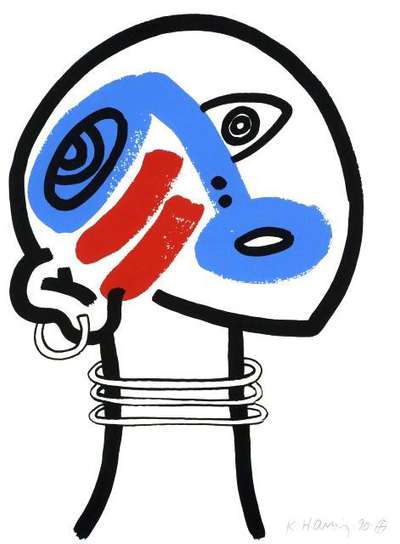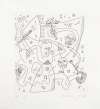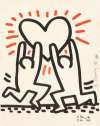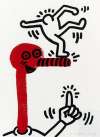The
Story Of Red And Blue
In 1989, Keith Haring created a print series titled The Story of Red & Blue. Depicting characters from children’s tales alongside those of more obscure origins, the prints alternate between red and blue until at last they are mixed together and held in a human hand, communicating hope.
Keith Haring The Story Of Red And Blue For sale
The Story Of Red And Blue Value (5 Years)
With £14601 in the past 12 months, Keith Haring's The Story Of Red And Blue series is one of the most actively traded in the market. Prices have varied significantly – from £406 to £7440 – driven by fluctuations in factors like condition, provenance, and market timing. Over the past 12 months, the average selling price was £1825, with an average annual growth rate of 6.4% across the series.
The Story Of Red And Blue Market value
Auction Results
| Artwork | Auction Date | Auction House | Return to Seller | Hammer Price | Buyer Paid |
|---|---|---|---|---|---|
 The Story Of Red And Blue 8 Keith Haring Signed Print | 25 Nov 2025 | Phillips Hong Kong | £1,275 | £1,500 | £2,150 |
 The Story Of Red And Blue 10 Keith Haring Signed Print | 19 Nov 2025 | Bellmans, Sussex | £1,530 | £1,800 | £2,250 |
 The Story Of Red And Blue 4 Keith Haring Signed Print | 3 Sept 2025 | Lama | £1,530 | £1,800 | £2,450 |
 The Story Of Red And Blue 5 Keith Haring Signed Print | 3 Sept 2025 | Lama | £1,530 | £1,800 | £2,450 |
 The Story Of Red And Blue 2 Keith Haring Signed Print | 13 Aug 2025 | Tate Ward Auctions | £1,275 | £1,500 | £2,000 |
 The Story Of Red And Blue 14 Keith Haring Signed Print | 28 Mar 2025 | Phillips Hong Kong | £1,743 | £2,050 | £2,800 |
 The Story Of Red And Blue 11 Keith Haring Signed Print | 14 Aug 2024 | Tate Ward Auctions | £2,380 | £2,800 | £3,750 |
 The Story Of Red And Blue 13 Keith Haring Signed Print | 15 May 2024 | Los Angeles Modern Auctions | £2,423 | £2,850 | £3,800 |
Sell Your Art
with Us
with Us
Join Our Network of Collectors. Buy, Sell and Track Demand
Meaning & Analysis
Formatted like a children’s storybook, The Story of Red and Blue prints are Haring at his most creative in terms of visual language. Representative of Haring’s desire to create a visual language that appealed to both children and adults alike, the series is formed of a variety of simplified images reminiscent of children’s fictional characters. Throughout the series Haring limits his colour palette to bright red and blue and renders each image in his distinctive linear style with black rounded lines.
Throughout the series Haring depicts some characters that explicitly reference children’s fictional tales and others that are more obscure. The Story Of Red And Blue 3 shows a line drawing of a pig reminiscent of a character from The Three Little Pigs, and The Story Of Red And Blue 5 that shows a comical depiction of the character from the famous children’s nursery rhyme Humpty Dumpty. The Story Of Red And Blue 9 and 17 are more unusual when considered within the context of the entire series, showing images of abstracted faces depicted in thick, bold lines and symmetrical compositions that represent Haring’s debt to non-western art traditions, echoing the bold lines of Pre-Columbian art – especially those of Nazca lines – and aboriginal art.
Across the first half of the series, each print alternates in colour between red and blue and by the end of the series the two colours appear together in the prints. By the final print, The Story Of Red And Blue 20, the colours red and blue are mixed together to form the shape of an egg, held in a human hand. In each print Haring uses simplified and generic pictograms to produce the effect of a children’s story book without a sensical storyline, where instead this story seems to focus abstractly on the colours red and blue.

